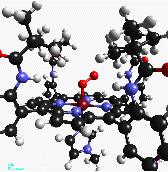Ayahuasca
The legendary "vine of the gods" from the Amazon River basin, Ayahuasca, also know as Yagé or "cat mint," is an essential ingredient in the hallucinogenic beverages that are the center of shamanic rituals of local tribes. In the 1940's, it was added to Coca Cola® after the United States Congress banned the importation of cocaine. Because ayahuasca gave neither the high energy "kick" or euphoria of cocaine, but instead caused twenty-four to forty-eight hours of intense stomach pain and vomiting, it was soon removed from grocery store shelves.
But even for its short time on the United States market, ayahuasca-enhanced cola had a lasting impact on the American psyche. Historians are convinced that ayahuasca hallucinations, experienced by millions of Americans, led to the adoption of the Federal income tax, the "beat" music scene, and, later, the return of the Panama Canal.
Chemical Make-Up
In the laboratory, ayahuasca was determined to have 7,534 active incredients, including gypsum, cobalt, hexavalent chromium, banana flavor, leptodyethyleparazobenzylamine acid, pee, eyelashes, peanut dust, peanuts, carrots, a dash of paprika, three cups of flour, beat gently at slow and then at medium for three minutes, and bake at 350 degrees until golden brown.
"Tripping"
Though often associated with LSD, the term "tripping" was first used by scientists experimenting with ayahuasca because users often hallucinate that they are standing in line at airport ticket counters waiting to have their luggage checked. Early drawings from caves in remote Brazil have images that look strikingly like flight attendants, suggesting that ayahuasca may hold the key to the development of the airline industry.
Ayahuasca is not without severe side effects. Habitual users' neuronal connections can become so damaged that they sometimes come to believe that Adrian Brody is handsome. Some sufferers go on to marry flightless birds.





